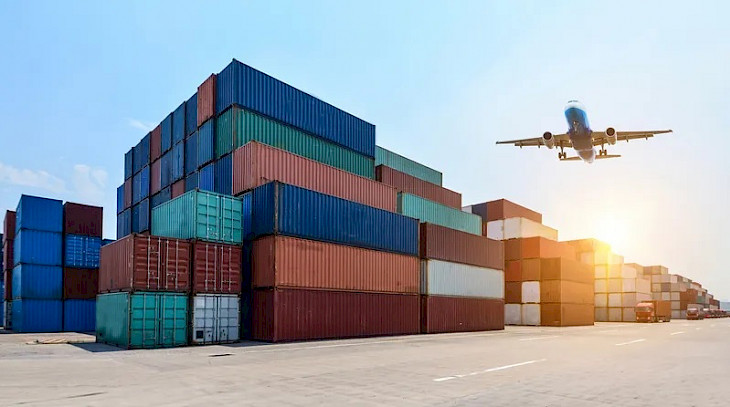Kazakhstan is rapidly emerging as a central transport and logistics hub in Eurasia. In 2024, the volume of transit freight through the country increased by 7.1%, reaching 34.6 million tons. According to forecasts, this figure will almost triple by 2030, reaching 100 million tons. These figures are reported by Zakon.kz, citing a study by Logistics Middle East.
This transit growth goes hand in hand with robust economic performance. In the first months of 2025, Kazakhstan’s GDP grew by 6% - the highest rate in the past 12 years. The main growth drivers were industry, construction, trade, and transport-logistics services.
One of the key factors behind Kazakhstan’s rise is its strategic location on 13 international transport corridors, including TRACECA, the North–South corridor, and the rapidly developing Middle Corridor (Trans-Caspian International Transport Route), connecting China with Europe and beyond. Under a new agreement with China, the number of container block trains running between the two countries is expected to increase from 600 to 3,000 per year by 2029.
Massive Infrastructure Investments
In 2025, Kazakhstan is modernizing 13,000 km of highways and 6,100 km of railways. Six airports are under construction or renovation, and two major maritime projects are underway. The rail sector alone is seeing five large-scale projects totaling 2.3 trillion tenge, focused on improving connectivity with China and Uzbekistan. By 2029, the country plans to upgrade 11,000 km of railway lines.
Road transportation is also being significantly upgraded. Currently, 9,000 km of roads are under reconstruction, with 1,083 km already in the active phase. By the end of the year, work on 847 km is expected to be completed. A key initiative is the “Center–West” highway, which will shorten the route between Astana and Aktau by 889 km, improving access to Caspian export routes.
Air Transport Expansion
Kazakhstan is also expanding its air transport network. As of 2024, six national airlines operate 669 weekly flights across 57 domestic routes. Internationally, Kazakhstan connects to 31 countries on 119 routes. In 2025, new destinations are expected to launch, including Rome, Munich, Shanghai, Busan, and others. Direct flights to the U.S. are planned for 2026.
Cargo aviation is developing in parallel with the launch of a new private freight carrier. By 2029, Kazakhstan aims to handle 65 million passengers and 500,000 tons of air freight annually.
Breakthrough in Maritime Logistics
Kazakhstan is also investing heavily in maritime logistics. In the port of Aktau, dredging operations are set to begin. Seventeen new vessels—including four ferries—will be added to the national fleet. A major milestone is the completion of a 1-million-ton grain terminal at the port of Kuryk and the launch of the Sarzha multifunctional logistics terminal project, which will have an annual capacity of up to 11 million tons.
In June 2025, Aktau launched a container hub, increasing its capacity to 240,000 TEU (Twenty-foot Equivalent Units). Kazakhstan has also opened a national terminal in the Georgian port of Poti and is expanding logistics centers in key global hubs, including Xi’an and Lianyungang (China), Seletino (Russia), Tashkent (Uzbekistan), Alat (Azerbaijan), and Hungary.
These developments strengthen Kazakhstan’s role along the East–West trade axis, positioning the country as a pivotal player in the evolving logistics architecture of Greater Eurasia.
CentralasianLIGHT.org
June 19, 2025

